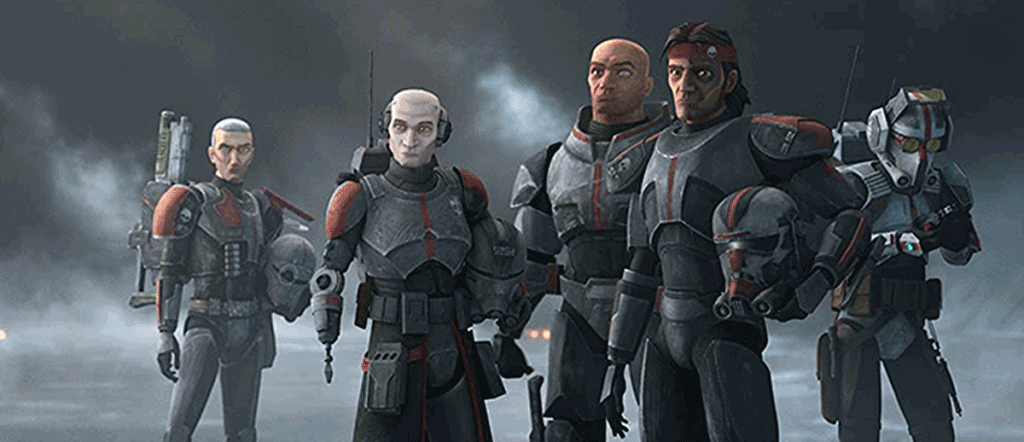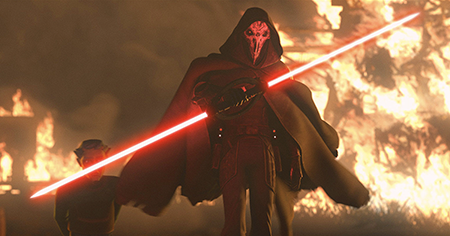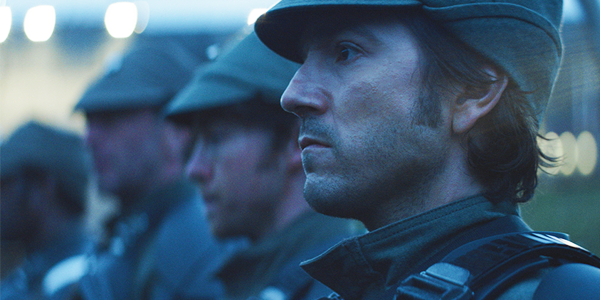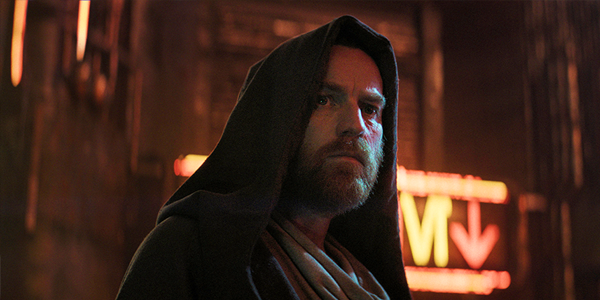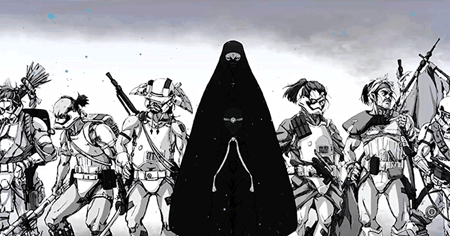ALSO ON CINELUXE
Sign up for our monthly newsletter
to stay up to date on Cineluxe
review | The Bad Batch
These animated series is not only a successful Star Wars spinoff but an audiovisual treat as well
by Dennis Burger
May 11, 2021
Beginnings definitely aren’t Dave Filoni’s strong suit. As much as I’ve raved about his efforts on Star Wars: The Clone Wars, that show took at least a season to find its footing. The followup, Rebels, also went through an awkward adolescence before developing into another incredible series—seriously some of the best Star Wars storytelling in the Disney era.
As the architect of the galaxy far, far away in the animated domain, Filoni puts a lot of faith in his audience’s ability to invest in a long game, but the flipside is that we in the audience have to put a lot of faith in him, to trust that things will pay off in the end. And they always do, at least so far. What, then, to make of the fact that The Bad Batch, the latest Star Wars series to spin from Filoni’s mind, starts off pretty darned good?
Before we dig too deeply into the execution of this new Disney+ series, let’s get some horse-race stuff out of the way for those of you who are interested. The Bad Batch is a direct sequel to The Clone Wars. In fact, the first four episodes of the seventh season of TCW served as a transparent back-door pilot for this show, which follows the trials and tribulations of a squad of rogue clones in the earliest days of the Galactic Empire.
The first episode overlaps with the final four episodes of The Clone Wars and the third act of Episode III—Revenge of the Sith, which is starting to become pretty well-worn territory in the new Star Wars canon. But rather than use the fall of the Republic, destruction of the Jedi, and rise of the Empire as a denouement or conclusion, the new show uses them as a jumping-off point, which quickly leads into territory that hasn’t been explored in live-action or animation.
Not to drop too much geekiness on your screen here but what makes Clone Force 99 (aka the Bad Batch) special is that they’re defective (or “deviant,” in their own words), and as such immune to the programming that causes the Clone Army to become proto-Stormtroopers in the new Empire. Each has a mutation that gives him a special skill but also makes him less controllable. And you don’t have to be a rocket surgeon to guess that their uniqueness will eventually put them at odds with the new totalitarian regime.
Neither do you have to be too observant—although perhaps you do need to be of a certain age—to recognize that this Bad Batch shares a lot of similarities with another group of small-screen anti-heroes, The A-Team, as well as big-screen misfits like The Dirty Dozen.
In the two episodes that have aired thus far—the 75-minute “Aftermath” and the 30-minute “Cut and Run”—we don’t really get a sense of what if any role this unruly team will serve in the impending rebellion. In fact, we don’t really get much of a sense of what the show’s formula will be, aside from the “formed family on the run from the Man” trope already explored in Rebels.
But in a way, that sort of doesn’t matter—at least not yet—The Bad Batch doesn’t stand or fall on a unique premise. What makes the show work already is that it has, established a consistent tone and style in just two episodes, something that Clone Wars and Rebels fumbled around with for a bit too long. It also seems to already know what it’s about—mainly, the internal tug-of-war that arises from being an iconoclast searching for a purpose and a meaningful role in a society that seems to be falling apart.
In terms of its look, the series definitely builds on the foundation of Clone Wars, relying on similar character models and generally following the trend of taking a sort of Gerry Anderson-esque “Supermarionation” vibe and injecting a healthy dose of articulation and fluidity into the animation.
Computing power has, of course, come a long way since Clone Wars first hit screens in 2008, though, and Filoni and his team don’t seem compelled to stick to the style of that series slavishly. The animation in The Bad Batch is much more detailed, and the backgrounds in particular benefit from much more richness, depth, and sophistication.
Perhaps the most striking thing about the visuals, though, is the way the imagery benefits from high dynamic range. The Bad Batch was created from the ground up for exhibition on Disney+, not broadcast TV, and as such has much more freedom to use shadows and light in interesting and effective ways. It remains to be seen if it maintains this Botticellian chiaroscuro aesthetic as it moves into new and unexplored environments—and it seems it will—but it already represents among the best application of Dolby Vision I’ve seen in animation to date.
Big props are also owed to composer Kevin Kiner, who returns to deliver a very different musical landscape from those he developed for Clone Wars and Rebels. With the former series, his music skewed heavily toward a Star Wars prequel-era style, and with the latter he had to at least evoke the music of the original trilogy. With The Bad Batch, though, the he has managed to create a new and different musical language that nonetheless feels perfect for the franchise. There’s a mix of traditional and experimental, of orchestral and electronic, that feels like Star Wars without aping John Williams or Ludwig Goransson or even Kiner’s own previous work in this universe.
The sound mixers seem to realize that they have something special to work with in Kiner’s score, because they give it oodles of room to breathe, both spatially and proportionally. At its most intimate, the sound mix is a center-speaker-heavy affair. At its most bombastic, it uses the entire Dolby Atmos soundscape to drop you right into the conflict. For the most part, though, it’s a three-channel, front-heavy mix, with dialogue following the characters from left to right across the screen and Kiner’s music filling the front soundstage, leaking onto into the surrounds to give it some ambience and an additional sense of space.
In short, The Bad Batch is an audiovisual treat of the best kind. And while the series itself hasn’t quite risen to the narrative or thematic heights of its predecessors, it’s off to a consistently entertaining start, which is something that couldn’t be said of Filoni’s previous animated Star Wars adventures. It also seems to be playing things a little safe at the moment, trying too hard at times to recreate the magic of its predecessors. If it can break out of that rut (and knowing Filoni’s past work, I have every reason to suspect that it will), The Bad Batch has the potential to be something truly great.
Dennis Burger is an avid Star Wars scholar, Tolkien fanatic, and Corvette enthusiast who somehow also manages to find time for technological passions including high-end audio, home automation, and video gaming. He lives in the armpit of Alabama with his wife Bethany and their four-legged child Bruno, a 75-pound American Staffordshire Terrier who thinks he’s a Pomeranian.
PICTURE | Perhaps the most striking thing about the visuals is the way the imagery benefits from high dynamic range
SOUND | At its most bombastic, the soundtrack uses the entire Atmos soundscape to drop you right into the conflict, but for the most part it’s a three-channel, front-heavy mix
© 2023 Cineluxe LLC


